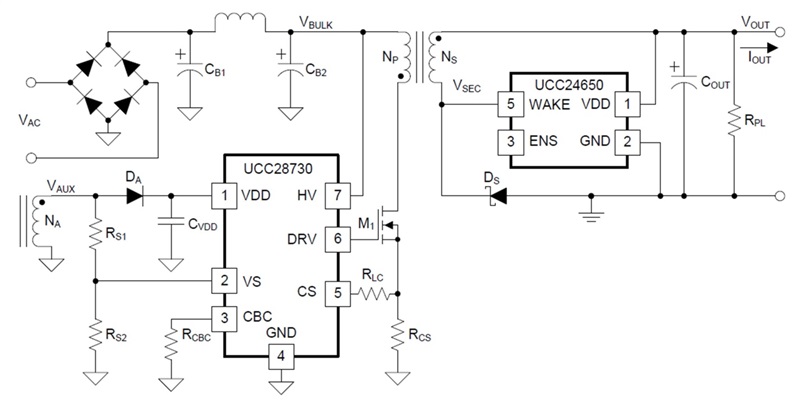SSZTCO2 may 2015
The U.S. and Europe’s energy-conservation programs are demanding standby power loss below 75mW and 100mW. Some industry-led initiatives are rewarding products that keep standby power consumption below 30mW. In the quest for no standby power, where do we declare victory?
It is becoming established in the industry that anything below 5mW is considered “zero-power” standby loss. This definition has been put forth by the International Electrotechnical Commission (IEC) 62301 clause 4.5.
Operating at very low switching frequencies is critical to achieving the lowest standby power consumption possible. In-between switching pulses, the AC/DC controller goes to sleep. Each time it switches, the controller awakens just long enough to monitor the loading conditions and determine the frequency at which it should continue to operate.
What happens if a load step occurs while the controller is asleep? Obviously, the output voltage drops until the next switching event, which can be a very long time. This limits the minimum switching frequency of controllers in standby mode to around 200Hz, without requiring inordinately huge output capacitors. At this frequency, standby power consumption levels can easily be kept below 20mW.
A minimum switching frequency in the tens of hertz is required to achieve standby power-consumption levels below 5mW. By using a simple wakeup monitor, the primary controller can operate at these incredibly low switching frequencies without sacrificing load-step response. Figure 1 shows a simplified schematic.
 Figure 1 A Wakeup Monitor Enables
Extremely Low Switching Frequencies, Minimizing Standby Power Loss
Figure 1 A Wakeup Monitor Enables
Extremely Low Switching Frequencies, Minimizing Standby Power LossThe wakeup monitor is located on the secondary side of the transformer and keeps continual watch on the output. Once it detects a load, the wakeup IC pulls the transformer secondary winding low for a short time, telling the primary-side controller to wake up immediately and respond to the increased load demand.
Minimizing standby power consumption requires implementing many other features as well – I discuss a few more details in my latest Power Tips post on EE Times. Find previous posts from TI's previous Power Tips posts.
In addition, here are a couple of examples of AC/DC converters that use a wakeup monitor to minimize no-load power consumption from our TI Designs power reference designs: